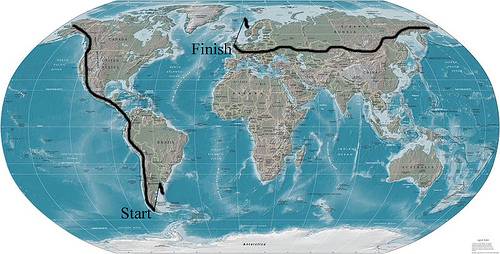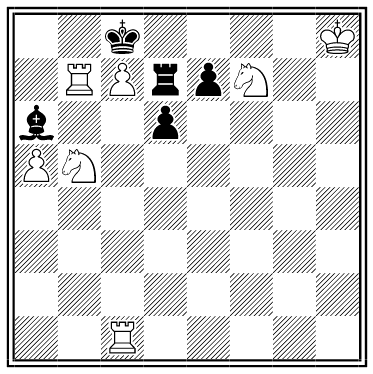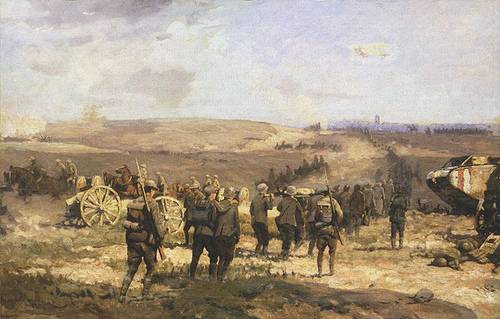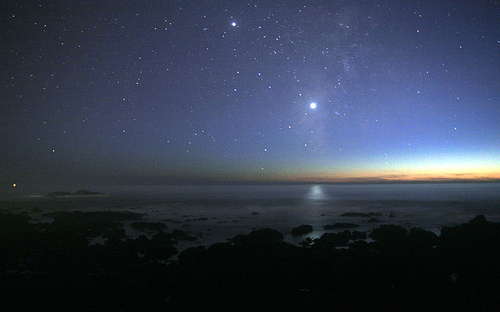“Have no respect whatsoever for authority; forget who said it and instead look what he starts with, where he ends up, and ask yourself, ‘Is it reasonable?'” — Richard Feynman’s father
The Hard Way

Karl Bushby is walking to his house in Hull, England. And because he likes a challenge, the 40-year-old ex-paratrooper has started from the most remote point possible: Punta Arenas in southern Chile, whence he set out on Nov. 1, 1998.
The 36,000-mile journey was to take 14 years, putting Bushby back in Hull by 2012. He’s got safely across the Bering Strait, but Russian visa restrictions have slowed him down, and once he reaches Kazakhstan he may pass south into Iran, which will bring its own adventures. Stay tuned.
Hell’s Bells

A Christmas puzzle by J.C.J. Wainwright, from the American Chess Bulletin, December 1917.
White to mate in one move.
Failure Theory
Can God make a stone so big that he can’t lift it?
This seems to cast doubt on God’s omnipotence.
But suppose he can create such a stone but simply hasn’t. Does that solve the difficulty?
The Great War, A to Z

An Austrian Archduke, assaulted and assailed,
Broke Belgium’s barriers, by Britain bewailed,
Causing consternation, confused chaotic crises;
Diffusing destructive, death-dealing devices.
England engaged earnestly, eager every ear,
France fought furiously, forsaking foolish fear,
Great German garrisons grappled Gallic guard,
Hohenzollern Hussars hammered, heavy, hard.
Infantry, Imperial, Indian, Irish, intermingling,
Jackets jaunty, joking, jesting, jostling, jingling.
Kinetic, Kruppised Kaiser, kingdom’s killing knight,
Laid Louvain lamenting, London lacking light,
Mobilizing millions, marvellous mobility,
Numberless nonentities, numerous nobility.
Oligarchies olden opposed olive offering,
Prussia pressed Paris, Polish protection proffering,
Quaint Quebec quickly quartered quotidian quota,
Renascent Russia, resonant, reported regal rota.
Scotch soldiers, sterling, songs stalwart sung,
“Tipperary” thundered through titanic tongue.
United States urging unarmament, unwanted,
Visualized victory vociferously vaunted,
Wilson’s warnings wasted, world war wild,
Xenian Xanthochroi Xantippically X-iled.
Yorkshire’s young yeomen yelling youthfully,
“Zigzag Zeppelins, Zuyder Zee.”
— John R. Edwards
Retail Trouble
A woman visits a jewelry store and buys a ring for $100.
The next day she returns and asks to exchange it for another. She picks out one worth $200, thanks the jeweler and turns to go.
“Wait, miss,” he says. “That’s a $200 ring.”
“Yes,” she says. “I paid you $100 yesterday, and I’ve just given you a ring worth $100.”
And she trips lightly out of the store.
Reporting In
Army slang collected in Mrs. Byrne’s Dictionary of Unusual, Obscure, and Preposterous Words:
- snafu: situation normal, all fucked up
- janfu: joint army and navy fuckup
- susfu: situation unchanged: still fucked up
- fumtu: fucked up more than usual
- tarfu: things are really fucked up
- fubb: fucked up beyond belief
- fubar: fucked up beyond all recognition
- sapfu: surpassing all previous fuckups
George Washington said, “An army of asses led by a lion is better than an army of lions led by an ass.”
The Morning Star Paradox

As it happens, the morning star and the evening star are both Venus–but the solar system might have evolved so that Mercury, for instance, was the brightest star in the morning sky.
Thus the morning star has a property that the evening star does not have: It’s necessarily identical with the morning star.
And if the morning star and the evening star have different properties, then they’re not the same object after all.
Strike Three
Notice, Hartford Courant, May 20, 1875:
TWO HUNDRED & FIVE DOLLARS REWARD–At the great base ball match on Tuesday, while I was engaged in hurrahing, a small boy walked off with an English-made brown silk UMBRELLA belonging to me, and forgot to bring it back. I will pay $5 for the return of that umbrella in good condition to my house on Farmington avenue. I do not want the boy (in an active state) but will pay two hundred dollars for his remains.
Samuel L. Clemens
Thinking Back
Can you move an object using only your mind? Of course not. But can you move one in the past?
Since January 1997, the Retropsychokinesis Project at the University of Kent has invited Web visitors to try to influence the replay of a prerecorded bitstream. In other words, they must try to influence an event that has already happened.
The experimenters claim to be agnostic as to whether retroactive causality exists, but “the best existing database suggests that the odds are in the order of 1 in 630 thousand million that the experimental evidence is the result of chance.”
Try it for yourself here — but remember, if you have some skepticism about this, it may only be because someone in the future is influencing you.
